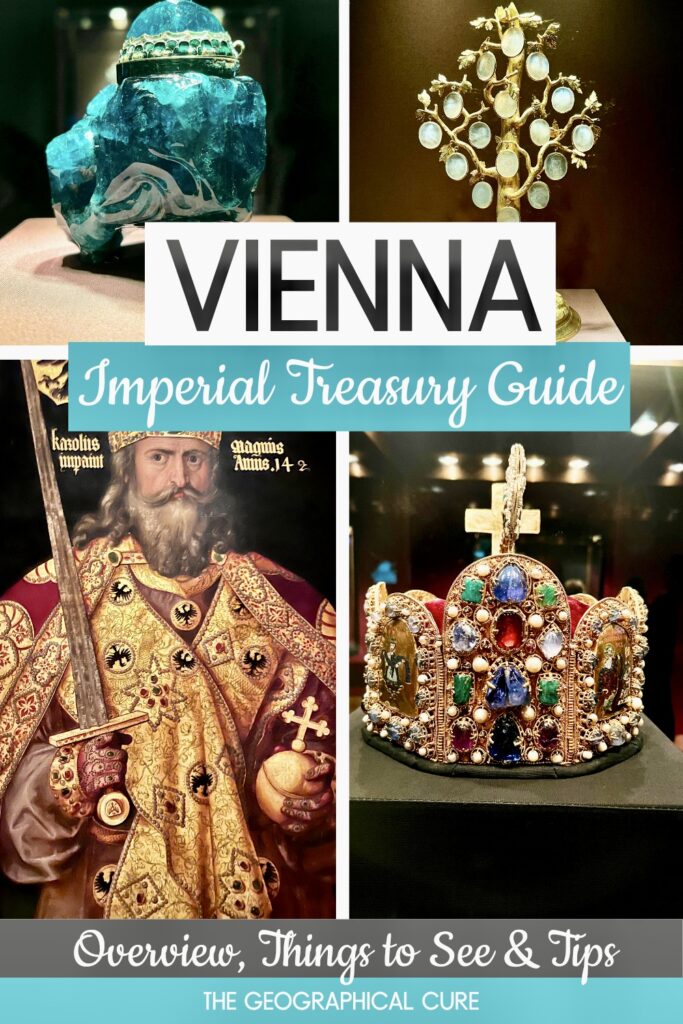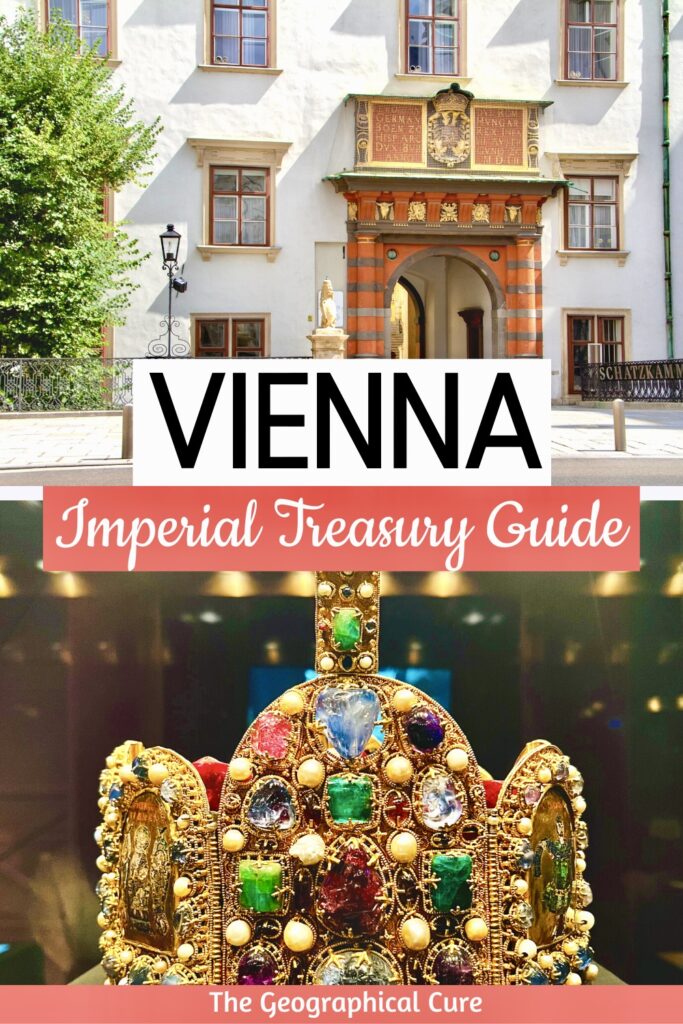Want to immerse yourself in the Hapsburg dynasty on a visit to Vienna? Head to the Imperial Treasury, known as the “Schatzkammer Wien.” It’s the world’s a treasure trove of history and opulence.
Part of the the Hofburg Palace complex, the museum houses a glittering collection of crown jewels and treasures from centuries of Habsburg rule. It’s the world’s most important collection of this type.
The Habsburgs were one of the most influential and enduring royal dynasties in European history, with roots dating back to the Middle Ages. Originating in Switzerland, they rose to prominence as rulers of the Holy Roman Empire and later the Austro-Hungarian Empire.
Known for their vast territorial holdings and political alliances through strategic marriages, the Habsburgs played a central role in shaping European politics and culture for centuries.
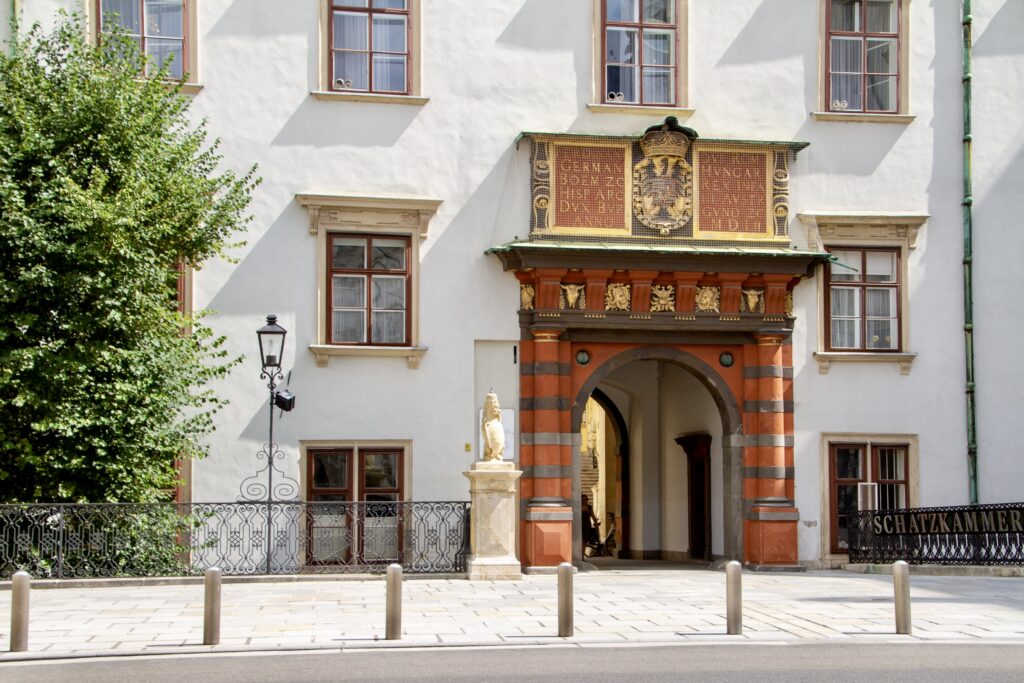
Their royal collection includes fancy jewels, imperial regalia, crowns, scepters, and other priceless artifacts. The museum also houses an extensive collection of religious relics, featuring items like the Holy Lance (believed to have pierced Christ’s side) and the Holy Grail.
It’s akin to seeing the Crown Jewels in the Tower of London. Only it’s better — you can actually take photos!
In this guide to the Imperial Treasury, I’ll tell you the most important objects to see and give you tips for visiting.
This is a popular attraction. You’ll want to pre-book tickets in advance. You can also book a guided tour.
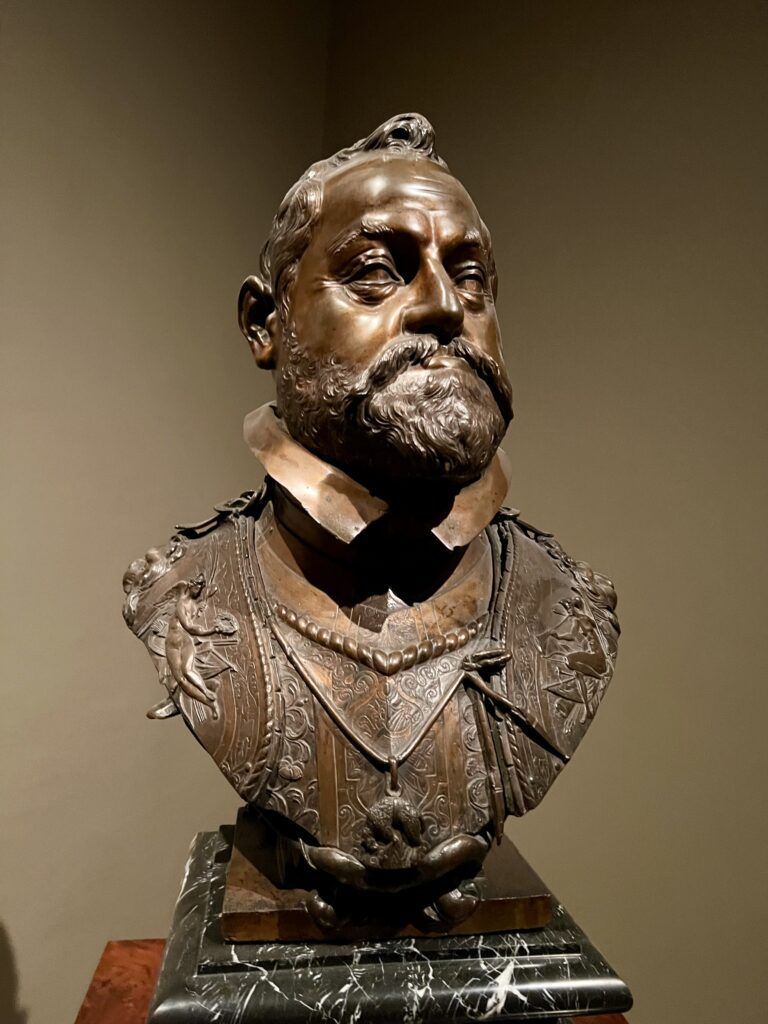
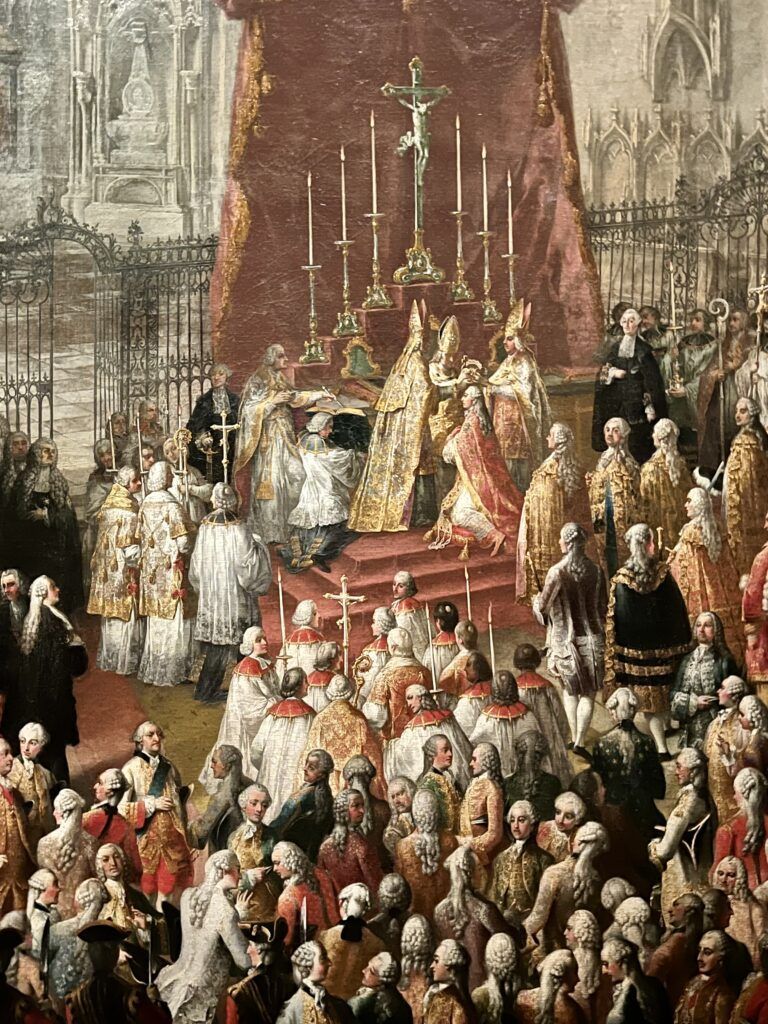
Guide To The Imperial Treasury: What To See
The Imperial Treasury is essentially divided into two parts: secular and ecclesiastic objects.
There are 21 rooms to explore. Each one is dedicated to a different aspect of the Hapsburg dynasty.
When you enter, you’ll find a written explanation of the entire chronology of the Austrian empire, from 800 to 1918. Be aware that it’s quite dark inside the museum.
Here are the highlights and things you can’t miss:
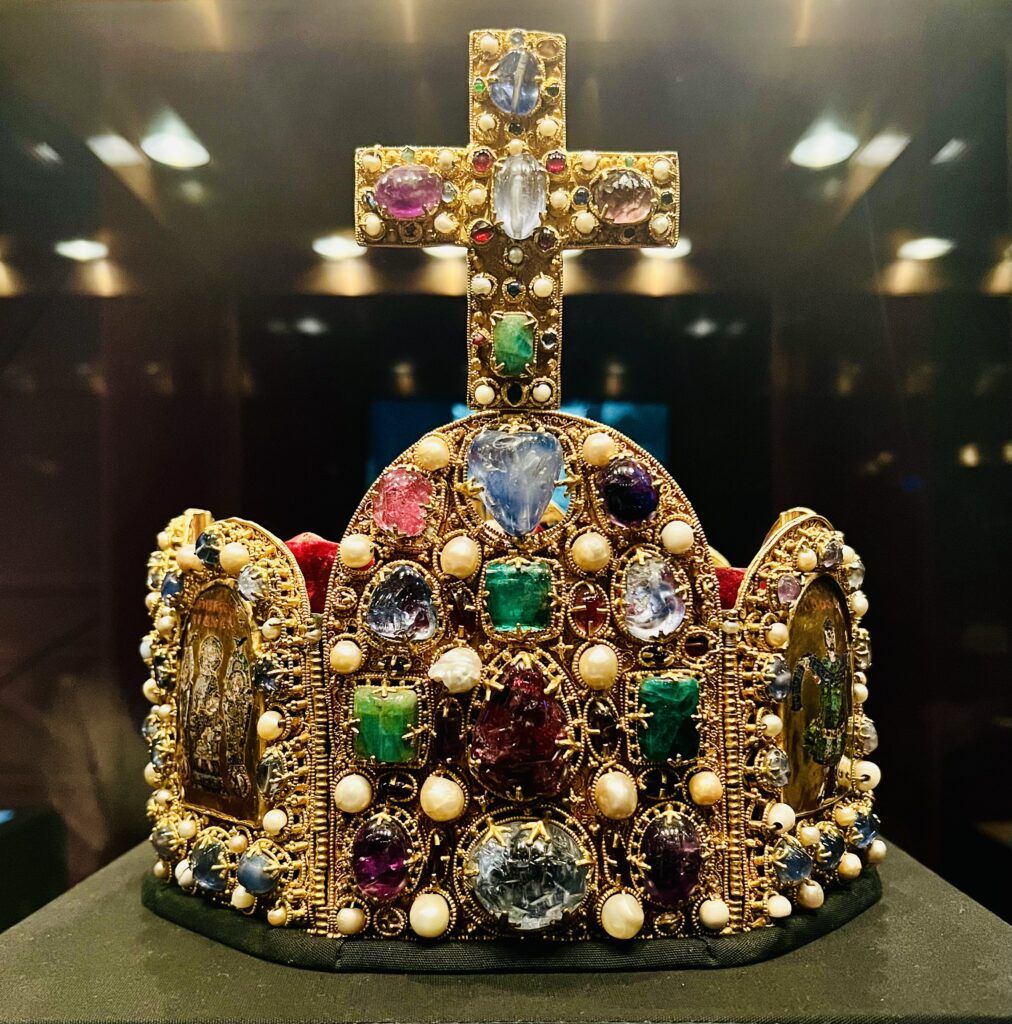
Imperial Secular Treasury
The secular treasury houses the imperial Crown Jewels and other artifacts. You’ll see crowns, scepters, orbs, swords, robes, and other ceremonial objects.
Holy Roman Emperor’s Crown
A symbol of immense power, this 10th century crown is the most important object in the Imperial Treasury.
For centuries, it was used in the coronation of all Holy Roman Emperors. Its design conveyed that the emperor was both holy and roman.
The jeweled arch is the parade helmet of ancient Roman emperors, whose successors the emperor claimed to be. The cross shows that the emperor ruled in Christ’s place on earth.
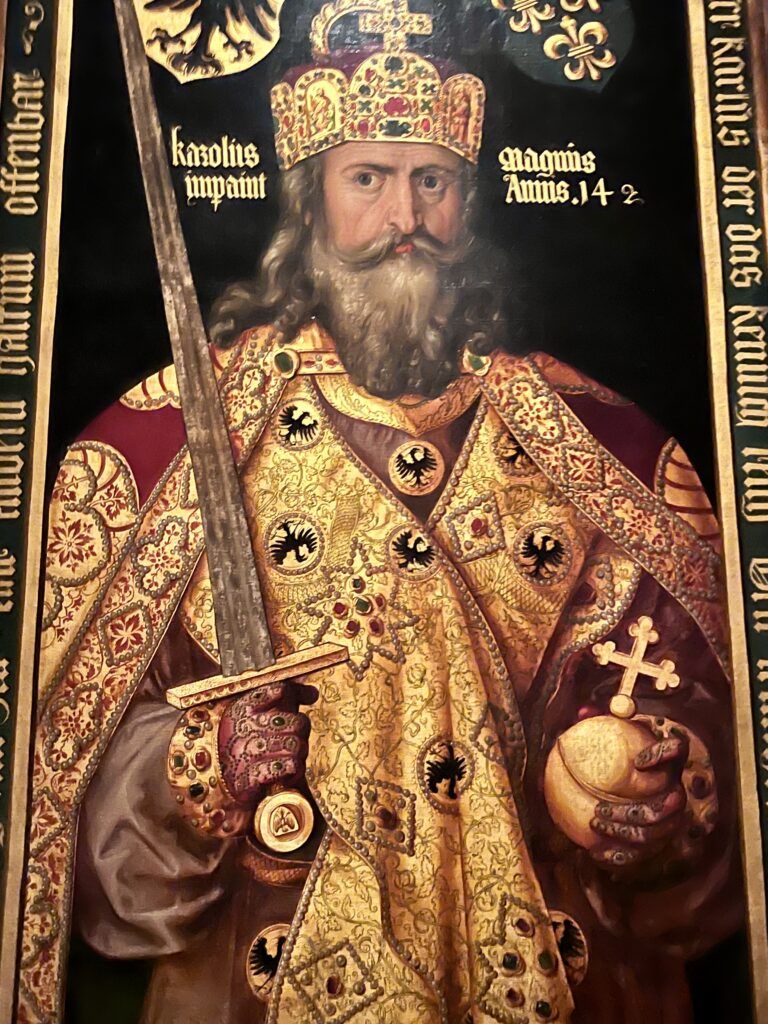
The crown is decorated with symbolic and biblical references. The image of King Solomon is old testament proof that kings can be both wise and good. King David is similarly proof that they can be just.
The crown has 8 hinged panels, which form the circlet. They represent the 8 gates of Jerusalem. 8 was also considered an imperial number and sign of perfection.
The crown is made with 22 karat gold and encrusted with 116 precious jewels, including pearls, sapphires, gold, and enamel. The 12 stones on the front and back plates symbolize the 12 tribes of Israel and the 12 apostles.
A copy of Albrecht Durer’s famous 1512 painting of Charlemagne, in the same room, shows him wearing the crown.
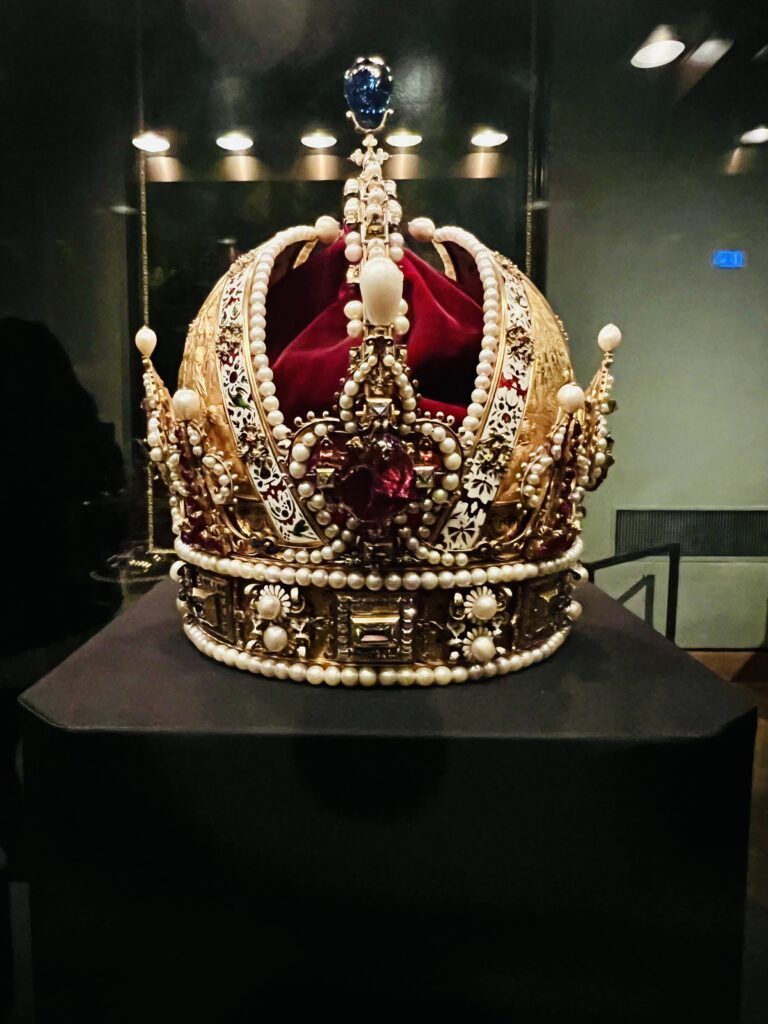
Austrian Imperial Crown
This crown is the second most significant one in the Imperial Treasury. made in 1602, it initially served as Emperor Rudolf II’s personal crown. Later, in 1894, it assumed the role of the crown of the newly established Austrian Empire.
It’s exquisitely crafted from gold and adorned with a profusion of precious gemstones, including massive rubies and lustrous pearls. It’s topped by a bluish green emerald that represents heaven.
The crown has a distinctive split down the center, making it resemble the a bishop’s miter. It’s on display with the accompanying scepter and orb, symbols of monarchical power.
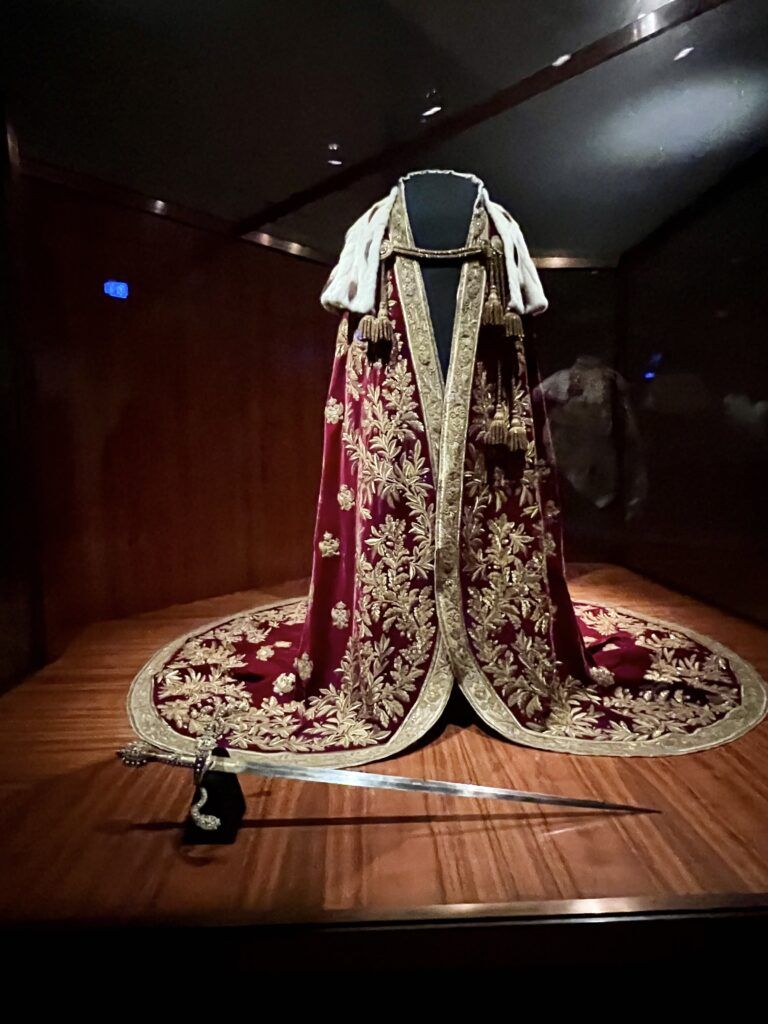
Coronation Robes
The coronation robe, or mantle, was commissioned by Emperor Francis I for the coronation of his son Ferdinand as the young King of Hungary.
It’s a voluminous and sumptuous robe made from red velvet, ermine, and white silk. It’s intricately embroidered with gold, reflecting the wealth and status of its wearer.
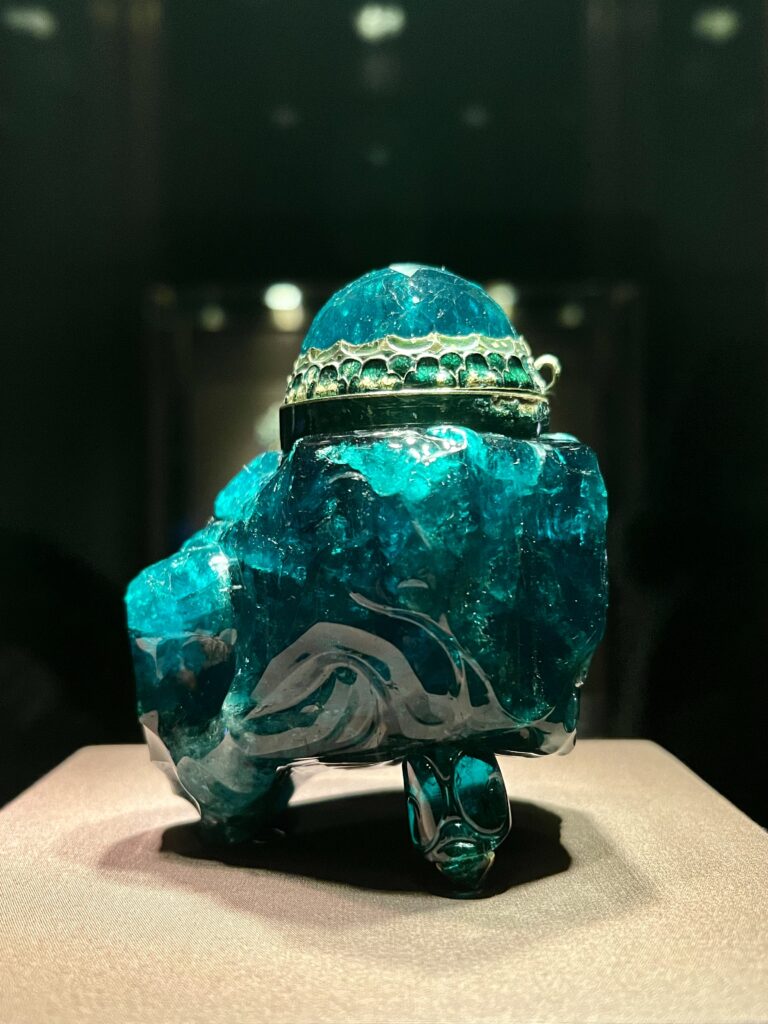
Emerald
This is literally a fist size emerald — huge!
The “Emerald of the Emperor” is a pear-shaped emerald with an exquisite green hue. It’s over 4 inches tall and approximately 2,680 carats, making it the largest cut emerald in the world.
The jewel’s lid was cut out of its interior. The resulting container — an unguentarium — was used as a vessel to hold ointments or oil during important ceremonies.
It was acquired by Emperor Rudolf II in the late 16th century, during his reign as the Holy Roman Emperor.
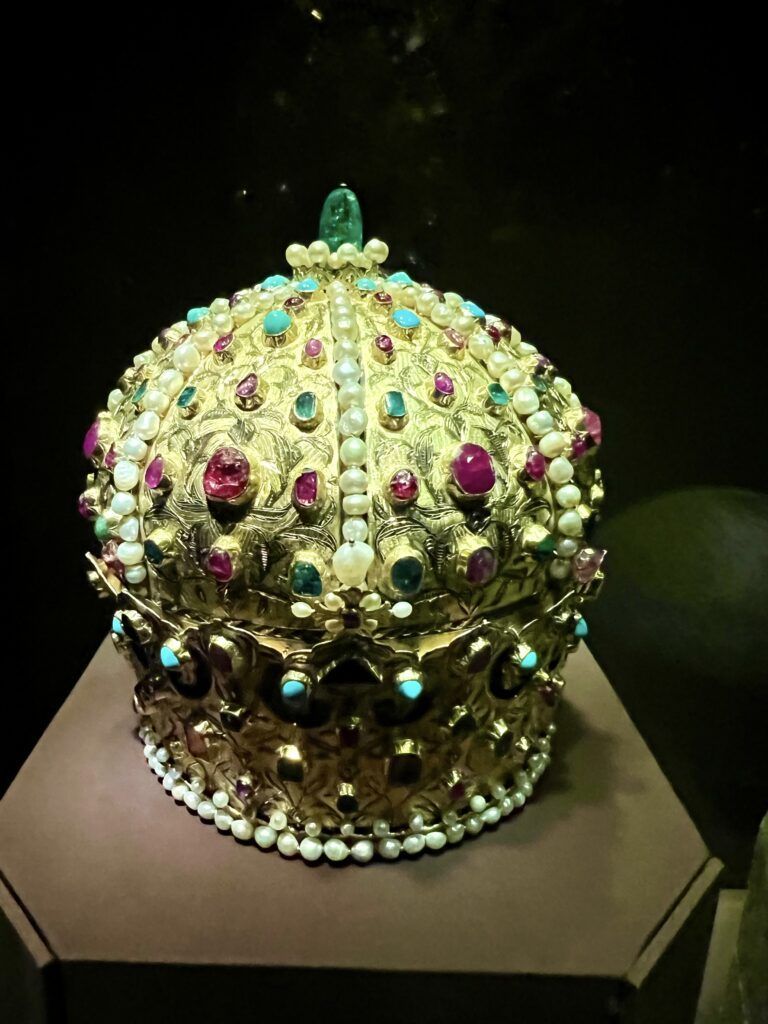
The Crown of István Bocskay is a golden crown crafted in the late 16th century. The crown was the work of Ottoman goldsmiths and drew inspiration from Oriental bishops’s miters.
The crown is embellished with rubies, emeralds, turquoise, and pearls. It’s essentially a momento from an insurrection against the Holy Roman Empire.
It’s named after István Bocskay, a Hungarian nobleman and military leader who worked to secure Hungarian autonomy from Habsburg rule. In 1606, his diplomatic endeavors culminated in the Treaty of Vienna, which recognized the Kingdom of Hungary’s autonomy.
It’s in an impossibly dark area of the treasury, so is hard to photograph properly.
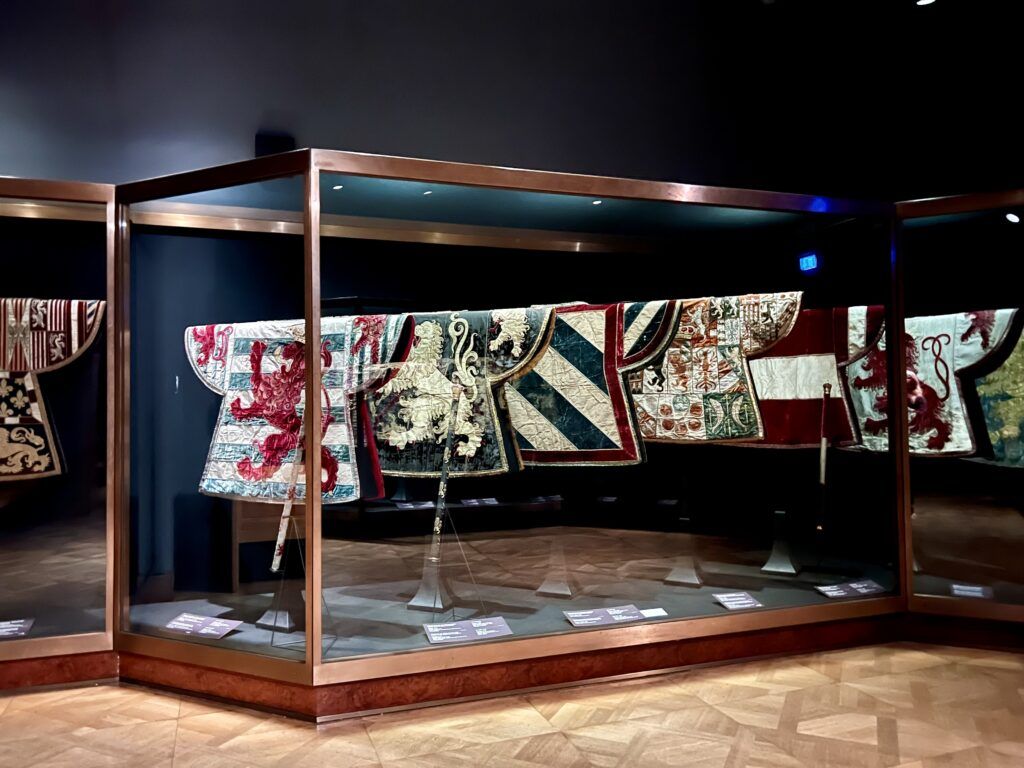
Burgundian Treasures
Little remains of the fabled wealth of the dukes of Burgundy. They were a powerful European dynasty that ruled over the Duchy of Burgundy in the late medieval and early Renaissance periods. They were related to the Hapsburgs through marriage.
One rooms holds countless precious objects — a gold enamel broach, a rock crystal goblet, and Charles the Bold’s sword.
There are also beautiful 15th century liturgical vestments and wall hangings made of gold and silk that belonged to the Order of the Golden Fleece. They are considered masterpieces of medieval textile art.
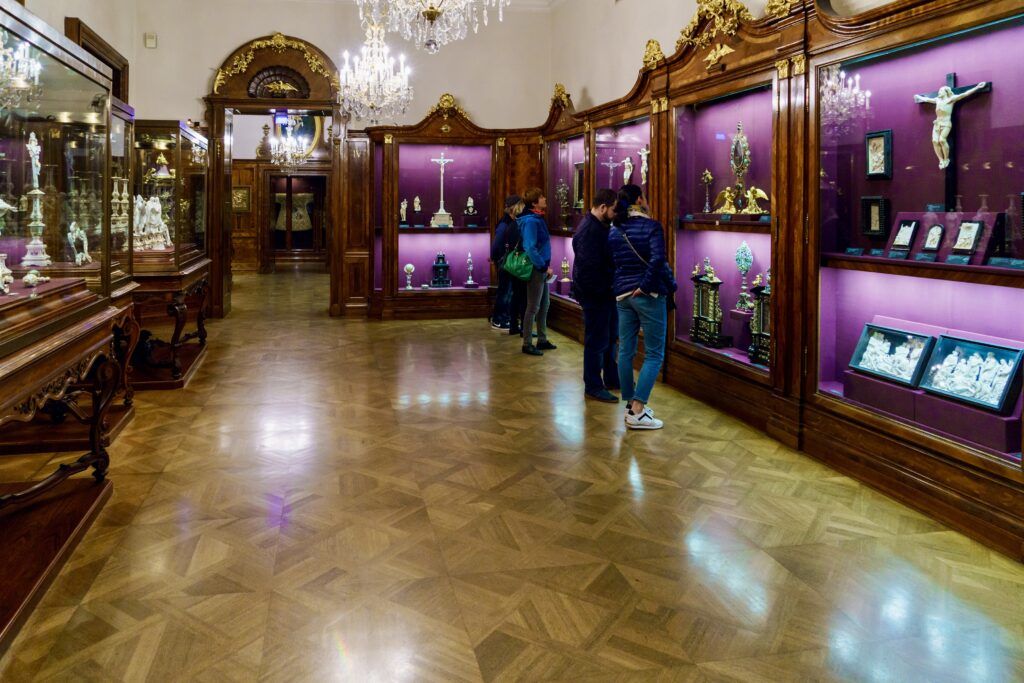
Ecclesiastical Treasury
The Ecclesiastical Treasury includes liturgical vestments and vessels, reliquaries, baptismal objects, and religious artworks. Empress Maria Theresa put them in the display cases in 1747.
Liturgical Vestments
These vestments were used in the various court chapels of the Hapsburgs. Some were embroidered by Empress Maria Theresa herself, her daughters, and her court. You’ll see several golden christening sets.
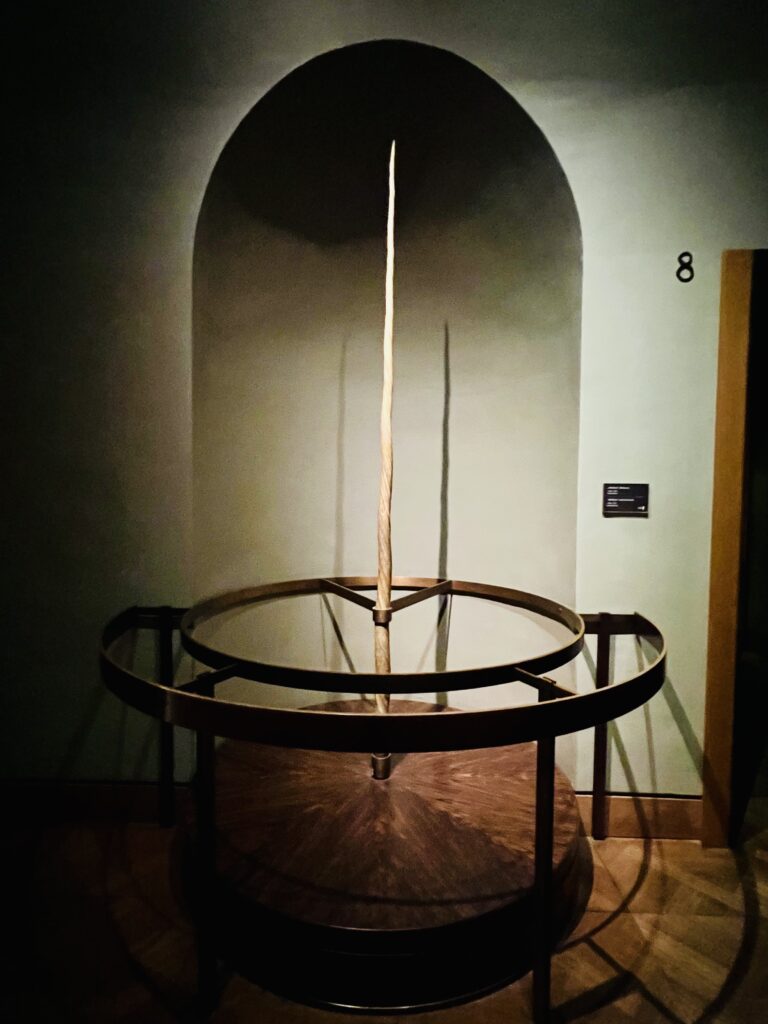
Unicorn Horn
This 500 year old “unicorn horn” is one of the more unusual things to see in the museum. Ferdinand I received it as a gift from King Sigismund II of Poland in 1540. Legend holds that it bestowed magical power on its owner and was an antidote to poison.
During this time, unicorns were thought to be actual animals, which could only be captured in a virgin’s lap. For this reason, the horn was regarded as an allegory of Christ.
In reality, it’s simply the tusk of a narwhal, a kind of whale that lives in the Arctic Ocean.
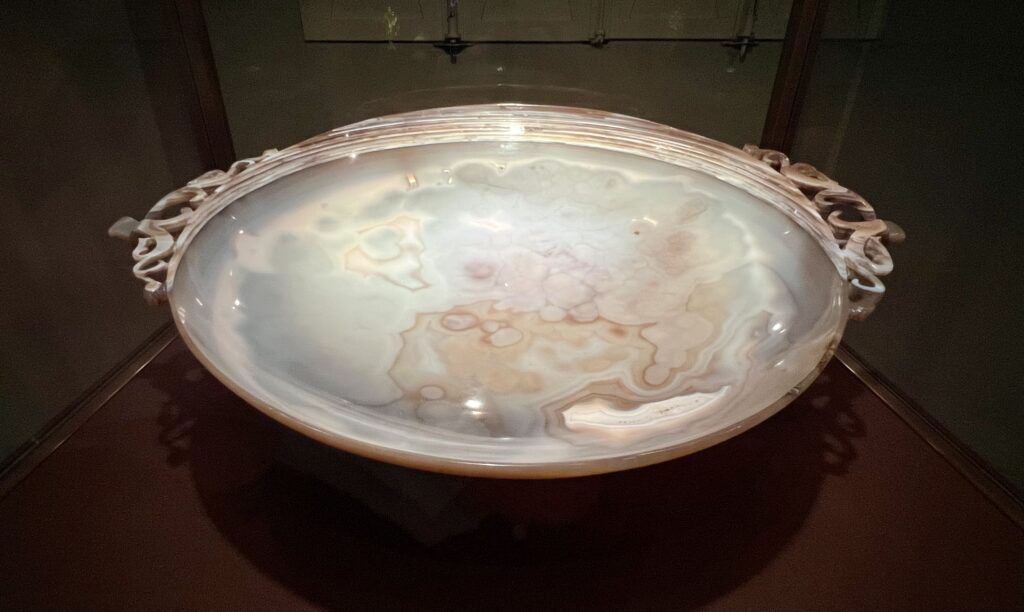
Agate Bowl
This polished bowl was carved out of a single piece of agate. Made in late antiquity in Constantinople, it’s the largest extant vessel of its type in the world.
The word Xristo, or Christ, is visible in the texture of the stone. I couldn’t see it myself. But apparently it’s possible to see it under the right lighting.
This special inscription made the vessel famous and it’s referred to as the “Holy Grail.” The legend of the Holy Grail is a medieval Christian myth that revolves around a sacred and elusive object, often depicted as the cup or dish used by Christ during the Last Supper.
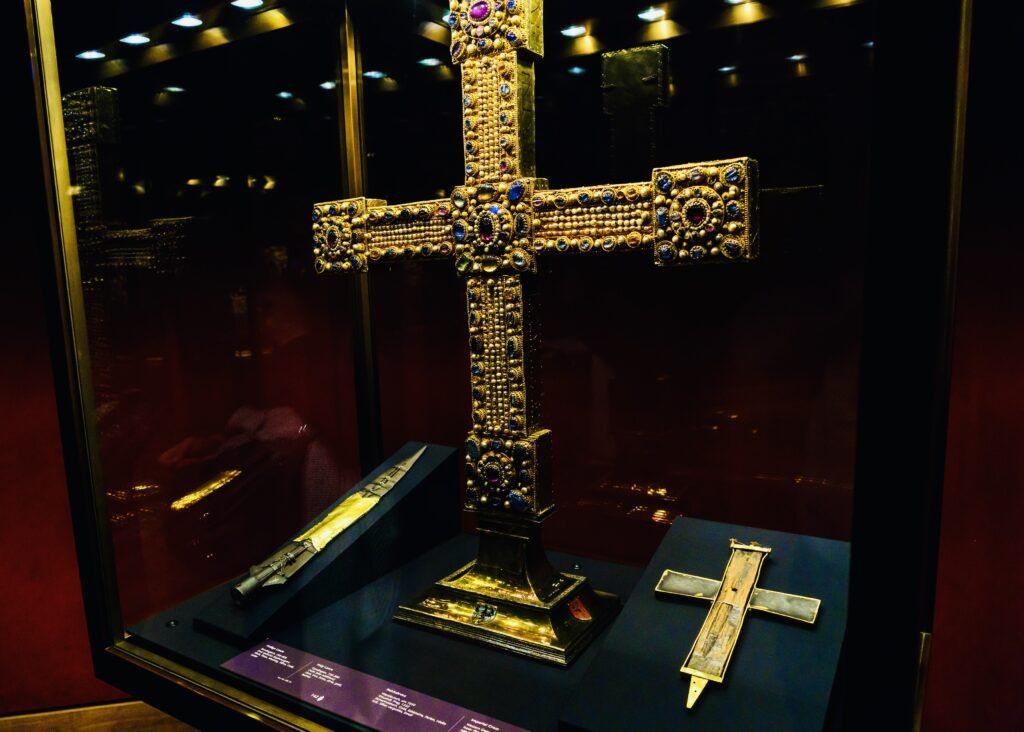
Holy Lance, Austrian Imperial Cross
The Imperial Cross preceded the emperor in ceremonies and he carried it into battle.
It’s a crucifix adorned with numerous precious gems, diamond, and pearls. The cross is considered a masterpiece of medieval craftsmanship.
It once held the holy lance and what is believed to be a substantial chunk of THE cross. And you can see an actual nail hole in the piece of the “cross” on display.
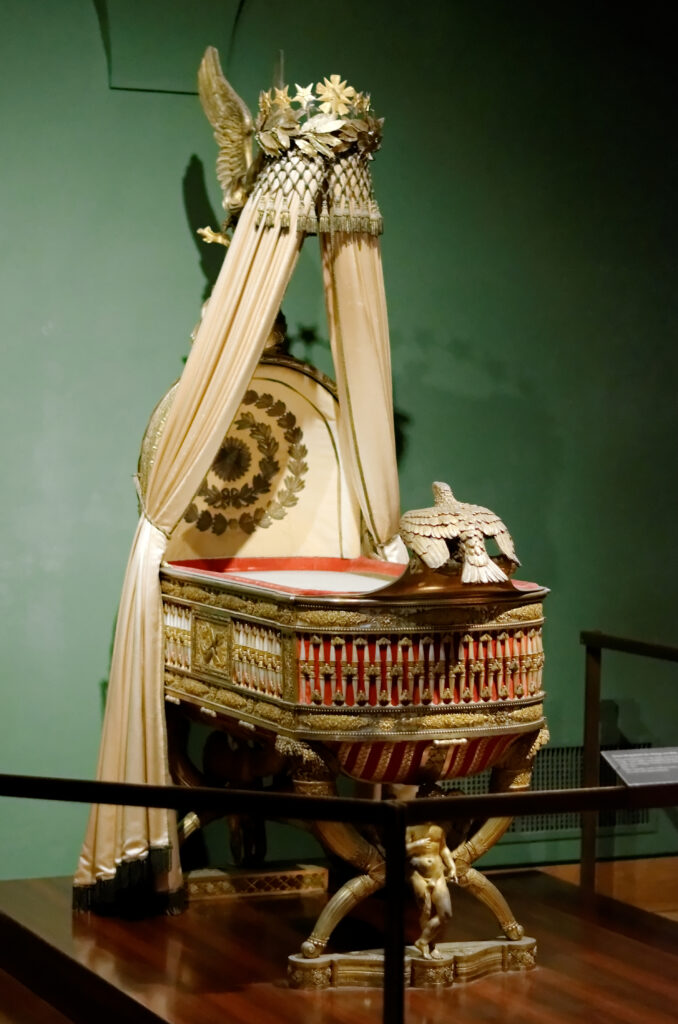
Cradle of Napoleon II
This remarkable “throne cradle” was originally crafted for Napoleon Bonaparte’s long awaited son, known as the “Eaglet” and holding the title “King of Rome.”
The city of Paris presented it to Empress Maria Louise to celebrate her son’s birth. In 1832, it entered the Imperial Treasury.
Made from a staggering 600 pounds of silver, this cradle boasts an opulent design with a regal canopy and sumptuous curtains.
The cradle has a military look. Its symbolism is clear: a baby eagle gazes up at a prominent star adorned with the letter N, a direct nod to Napoleon’s legacy. It’s decorate with laurel wreaths, horns of plenty, and bees — all symbols of good government.
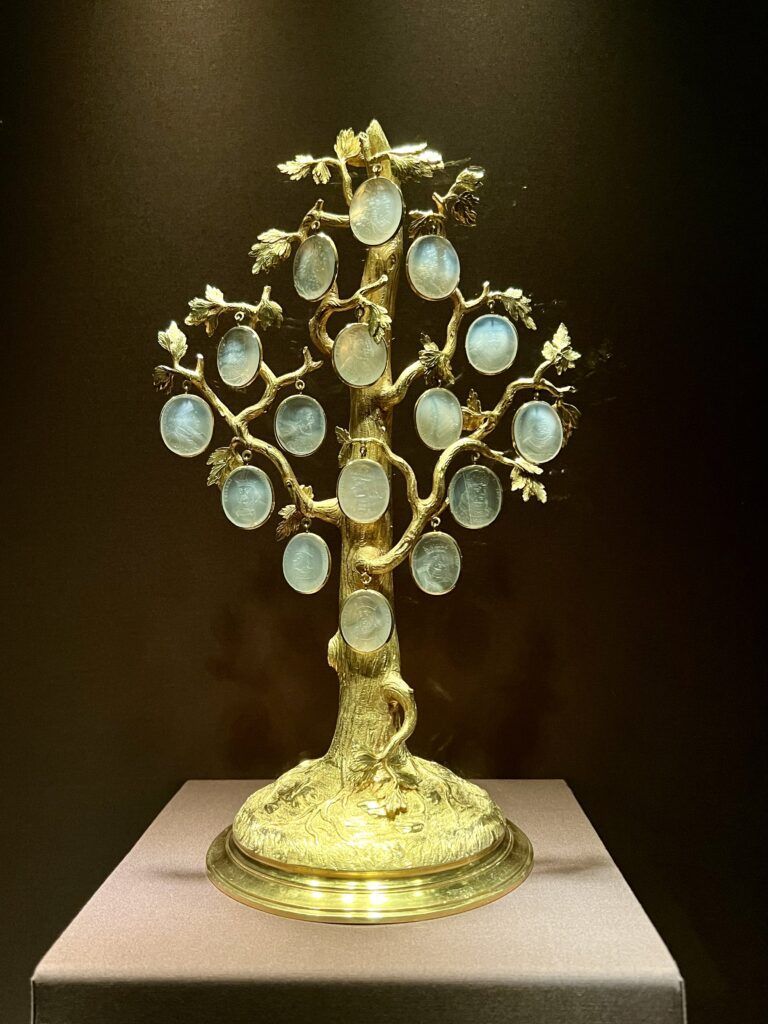
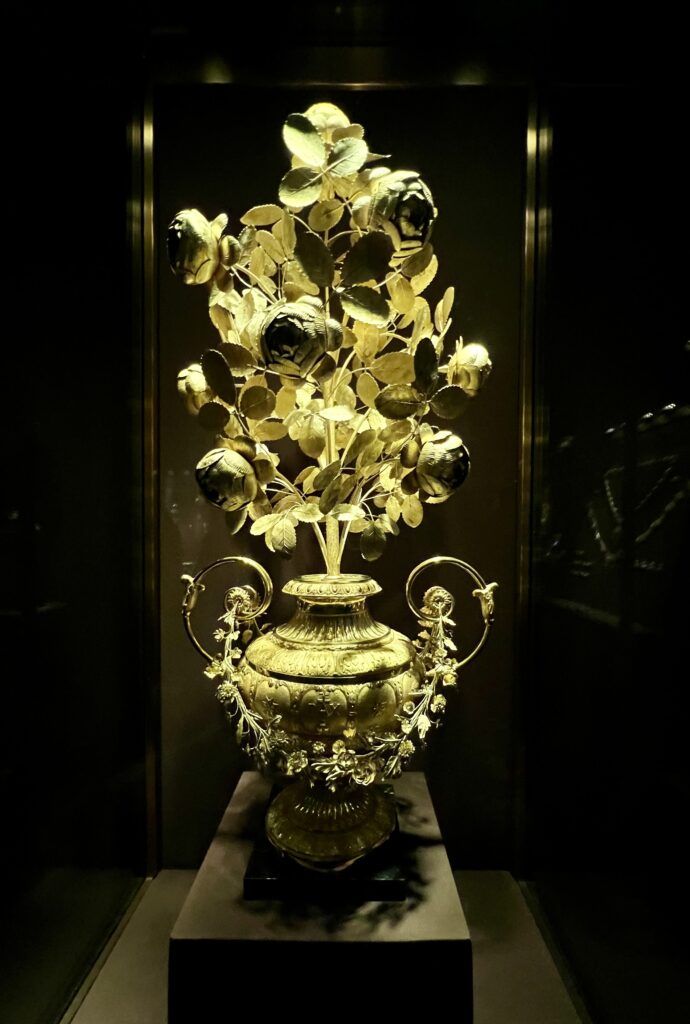
Tips For Visiting The Imperial Treasury
Address: Schweizerhof, Hofburg, 1010 Wien, Austria
Hours: Open Wednesday to Monday, from 9:00 am to 5:30 pm. Closed Tuesday.
Tickets:
Tickets are 14 €. Click here to pre-book a ticket.
The audio guide is 5 €. I definitely recommend getting it if you want information on the individual objects and a history of the Hapsburgs. There is some signage, but not that much.
The museum is included in the Vienna Pass. You can also buy a combined ticket for the Imperial Treasury and the Kunsthistorisches, if you plan to visit both museums.
The museums also offers private tours. Check the website for details.
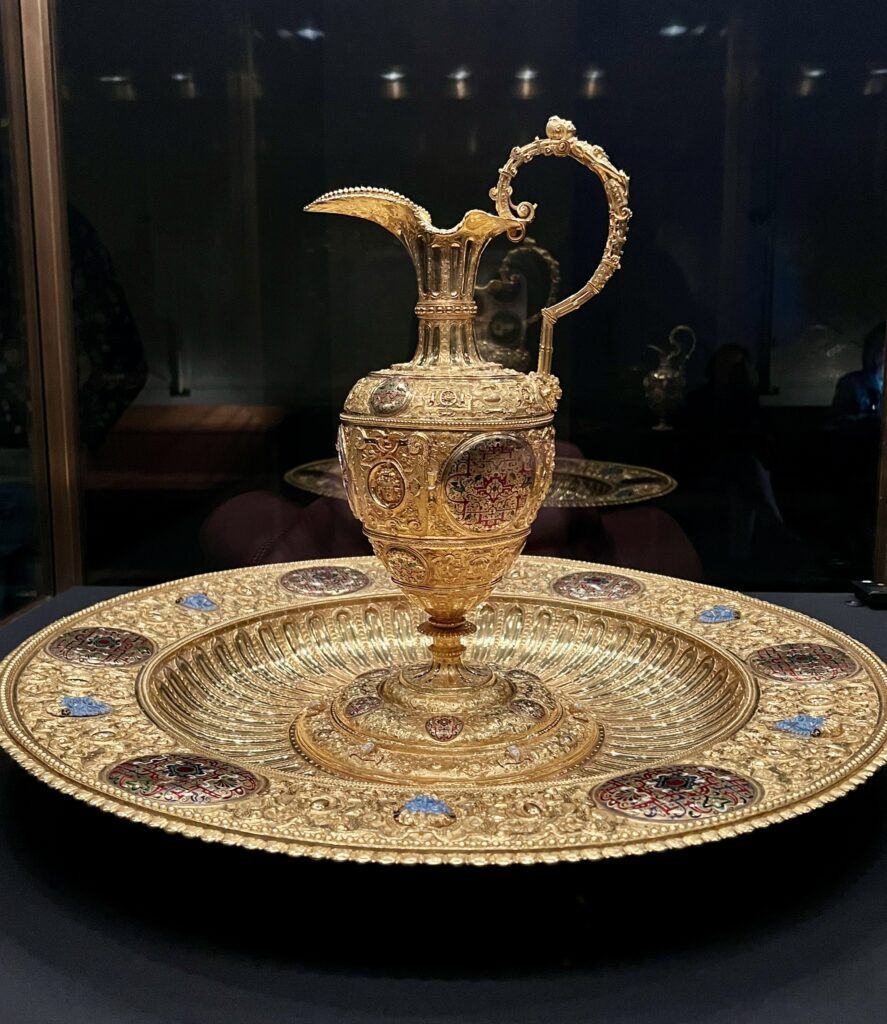
How Long To Spend? The museum is relatively compact, so you can get through it in an hour or so if you’re in a rush. If you have the audio guide, budget 2+ hours.
Is the Imperial Treasury Worth Visiting?
You either like Crown Jewels or you don’t. If you do, this museum is a must visit.
I thought it was completely worthwhile, even though jewels aren’t usually my cup of tea. It’s a place full of history and houses a staggering collection. I enjoyed it more than touring the royal apartments.
Pro Tips: Non-flash photography is allowed. It’s very dark, however, so your photos won’t turn out well.
I hope you’ve enjoyed my guide to the Imperial Treasury in Vienna. You may find these other Vienna travel guides and resources useful:
- 3 days in Vienna itinerary
- guide to the Belvedere Palace
- guide to Klimt paintings in Vienna
- guide to the Beethoven trail in Vienna
- what to do in Vienna in winter
- best museums in Vienna
- guide to the Sisi Museum
- guide to the Kunsthistoriches
- guide to the Vienna Secession
- guide to the Albertina Museum
- guide to the Freud Museum
- guide to the Secession Museum
- guide to St. Stephen’s Cathedral
If you want to visit the Imperial Treasury, pin it for later.

